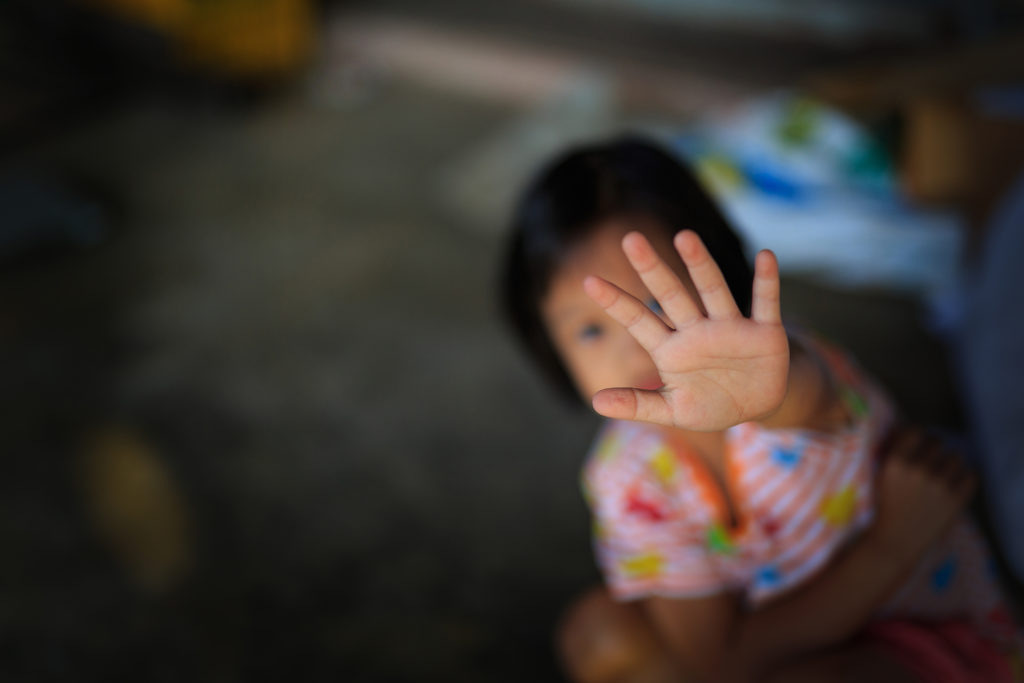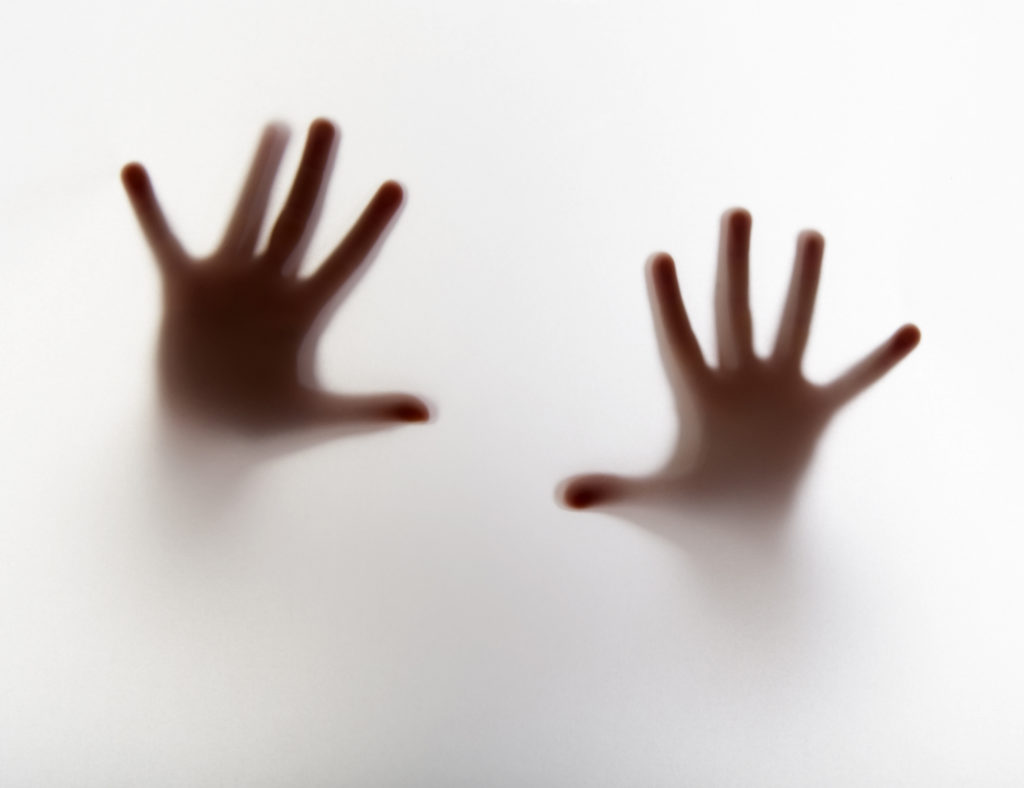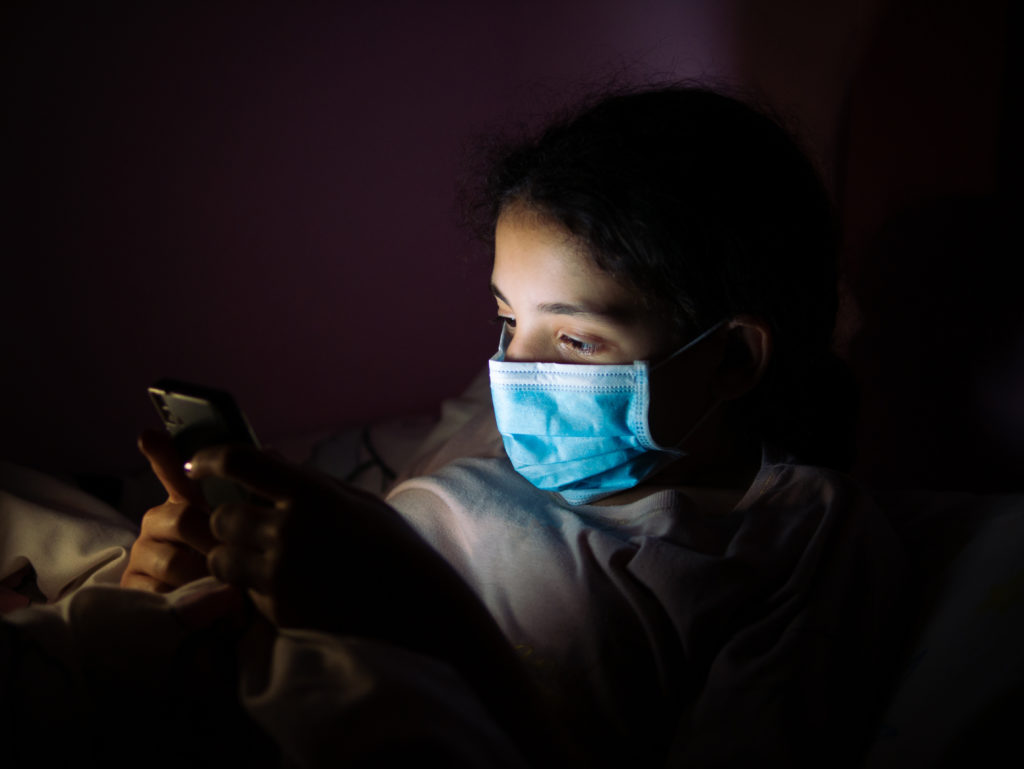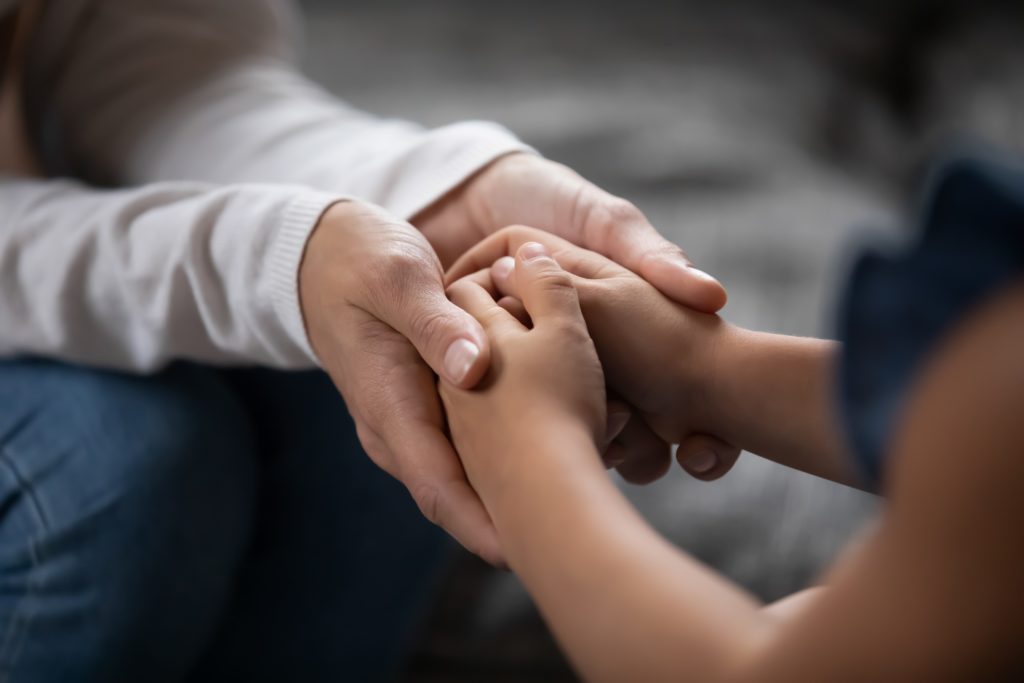Child sexual abuse is a global phenomenon that affects children and youths without any distinction of religion, economic or social class, gender or ethnicity. It is a crime and an Adverse Childhood Experience (ACE) which can have lifetime impacts on survivors. In order to protect children from child sexual abuse, it is essential to raise awareness on this issue and to clearly speak up about such situations in order to provide the victims with the protection and help that they deserve and also to prevent such cases of child rights violations from happening to other children.

Defining child sexual abuse
Child sexual abuse is a crime that occurs across races, religions and classes with lifetime effects (YWCA, 2017). It can be defined as sexual activity with a child by an adult, adolescent or older child. If any adult engages in sexual activity with a child, that is sexual abuse (Prevent Child Abuse, 2023). Child sexual abuse includes sexual slavery, pornography, child abuse and sexual assault (UNHCR, 2023).
Moreover, child sexual abuse can also amount to sexual exploitation, which can be defined as an actual or attempted abuse of someone’s position of vulnerability (such as a person depending on you for survival, food rations, school, books, transport or other services), differential power or trust, to obtain sexual favours, including but not only, by offering money or other social, economic or political advantages. Additionally, sexual exploitation includes trafficking and prostitution (UNHCR, 2023).
Child prostitution and child sex tourism
The United Nations Optional Protocol to the Convention on the Rights of the Child on the Sale of Children, Child Prostitution and Child Pornography defines child prostitution as “the use of a child in sexual activities for remuneration or any other form of consideration” (Montgomery, 2014). In this sense, child sexual abuse also encompasses child prostitution as well as the phenomena of sex tourism, which affect many countries in the world, such as Morocco, South Africa, the United States, Thailand, Cambodia, India, Brazil, and Mexico.
The main reasons for child sex tourism are related to the lack of education, economic disparity, corruption and rural-urban migration which put children in the condition to be forced to have sexual intercourses for survival, money or to accomplish some cultural practices, for instance by getting married very young (World Tourism Organization, 2001). Children could be easily involved in this kind of practice as their vulnerable positions require adults to protect them from possible harm and it is not always the case.
Poverty could also push children’s parents to allow or be complicit in child sex tourism as it could be a way for the entire family to survive. On the other hand, clients have an interest in taking advantage of these vulnerable situations for their own interests, especially in countries where the legal system is weak and sex with a minor is an offence that is not fully prosecuted.
Identifying the different types of child sexual abuse
There are two main types of child sexual abuse: touching and non-touching. Touching includes touching a child’s genitals, making a child touch someone else’s genitals, playing sexual games, and/or putting objects or body parts inside the vulva or vagina, in the mouth, or in the anus of a child for sexual pleasure. Non-touching abuse includes showing pornography to a child, exposing a person’s genitals to a child, prostituting/trafficking a child, photographing a child in sexual poses, encouraging a child to watch or hear sexual acts either in person or on a video, and/or watching a child undress or use the bathroom (Prevent Child Abuse, 2023).
According to RAINN (2023), some forms of child sexual abuse include (but are not limited to):
- Exhibitionism, or exposing oneself to a minor;
- Fondling;
- Sexual intercourse;
- Masturbation in the presence of a minor or forcing the minor to masturbate;
- Obscene conversations, phone calls, text messages, or digital interaction;
- Producing, owning, or sharing pornographic images or movies of children;
- Sex trafficking;
- Any other contact of a sexual nature that involves a minor.
Child sexual abuse in numbers

Many children wait to report or never report child sexual abuse. Therefore, the numbers below likely underestimate the true impact of the problem (CDC, 2023). Nevertheless, about one in five children in Europe are victims of some form of sexual violence and one in every seven victims is under six years (EUROCHILD, 2023). Furthermore, between 70 percent and 85 percent of children know their abuser and about one third of abused children never tell anyone (COE, 2023). According to the Australian Child Maltreatment Study (ACMS), the first nationally representative study of child maltreatment rates found that 28.5 percent of Australians experienced child sexual abuse.
Girls experienced double the rate of child sexual abuse (37.3 percent c.f. 18.8 percent of boys). The ACMS found that almost 1 in 4 Australians experienced one or more types of contact child sexual abuse (23.7 percent), while almost 1 in 5 experienced non-contact child sexual abuse (18.1 percent). Almost 1 in 10 Australians experienced forced sex in childhood (Bravehearts, 2023).
In a recent study of Adverse Childhood Experiences among almost 250,000 participants across 23 US states, 16.3 percent of females and 6.7 percent of males reported experiencing sexual abuse before the age of 18 years (Bravehearts, 2023).
A review of child sexual abuse studies in Nordic countries found prevalence rates for broadly defined child sexual abuse of between 3–23 percent for boys and 11–36 percent for girls. The prevalence rates for contact abuse, meanwhile, were 1–12 percent for boys and 6–30 percent for girls, while the prevalence rates for penetrating abuse were 0.3–6.8 percent for boys and 1.1–13.5 percent for girls (Bravehearts, 2023).
A review of child sexual abuse studies in Japan found a range of contact abuse for females of 10.4–60.7 percent, while the prevalence of contact abuse for males (from just one study) was 4.1 percent. Further, the rate of penetrative sexual abuse for females was found to range from 1.3–8.3 percent, and for males from 0.5–1.3 percent (Bravehearts, 2023).
Intra-familial child sexual abuse
Intra-familial child sexual abuse refers to child sexual abuse that occurs within a family environment. Research has shown that the vast majority of child sexual abuse perpetrators are male, although abuse by women does occur, and in around a quarter of cases, the perpetrator is under 18 (McNeish, Scott, 2018).
Child sexual abuse can occur in families from all sociocultural conditions, religions and ethnicities, although there are differences in the extent to which abuse gets reported and responded to. High levels of secrecy, shame and stigma within some black, Asian and Minority Ethnic (BAME) groups, combined with cultural assumptions by professionals can increase barriers to disclosure. BAME children are under-represented in child protection services when it comes to sexual abuse (McNeish, Scott, 2018).
Estimates vary widely according to how studies define abuse and the methods used, with most based on retrospective reports by adults. Studies suggest that 15–20 percent of girls and 7–8 percent of boys experience some form of sexual abuse before the age of 16.
In a UK study involving almost 2,000 young people aged 18–24, nearly 11 percent reported some kind of unwanted sexual experience, and 6 percent reported coerced sexual acts, when they were under the age of 18. It is estimated that child sexual abuse in the family environment comprises up to two-thirds of all child sexual abuse reported to the police (McNeish, Scott, 2018).
Sexual abuse of disabled children
Research indicates that disabled children are more than three times more likely than non-disabled children to be victims of child sexual abuse (McNeish, Scott, 2018). It is estimated that only 10% of these crimes are discovered. This increased risk could be linked to the lack of reporting due to communication difficulties, and physical limitations that prevent escape (Saprea, 2023).
Moreover, disabled children could also have difficulties in reporting abuse due to Children could also not report sexual abuse as they cannot recognize it because of the lack of education regarding healthy sexuality and sexual abuse, and societal myths that a disability shields them from sexual abuse (Saprea, 2023). These factors, combined with a lack of specialized professional knowledge, can lead to low levels of disclosure and inadequate responses (McNeish, Scott, 2018).
Child sexual abuse in sport
Child sexual abuse happens in sports, too. Children can be at risk because of high tolerance for physical violence and injuries, the authoritarian leadership and unequal power relationships between coaches and athletes and the male-dominated gender ratio. Most of the time, incidents are silenced, and inappropriate sexual behaviour is tolerated, and discrimination and gender inequality are accepted. Additionally, there are several situations that could heighten the potential risk, such as changing rooms, showers, carpooling or overnight stays (COE, 2023).
The Independent Inquiry into Child Sexual Abuse has published new research and it has found that, of the 3,939 survivors of sexual abuse who came forward to the Truth Project, as part of the inquiry, and shared an experience between June 2016 and March 2020, 64 described child sexual abuse that took place in a sporting environment. Fifty-eight (91%) of those 64 participants reported being sexually abused by a sporting coach or volunteer in a sports organisation (The Guardian, 2020).
Child sexual abuse online
The Internet provides anonymity and an environment in which abusers can interact and find a community that reassures them that their criminal aims are ok, and these digital spaces can even incite them to further their activities. They can exchange materials and build their own community. It also fuels demand for child sexual abuse material. There are closed groups where an ‘entrance fee’ in the form of new, unseen child sexual abuse material is required (EC, Strategy, 2023).
When the abuse is also recorded and shared online, the violation continues as long as perpetrators share these images and videos online. Victims have to live knowing that images and videos of the crimes showing them being exploited are being circulated and anyone, including friends or relatives, may see them (EC, Strategy 2023).
In the last years, there has been both a significant number of cases of child sexual abuse in the EU Member States as well as a dramatic increase in reports of child sexual abuse online, both globally and in the EU. The EU has become the largest host of child sexual abuse material globally (from more than half of global child sexual abuse in 2016, to more than two thirds in 2019) (EC, Strategy 2023).
The influence of the COVID-19 crisis on child sexual abuse

The COVID-19 crisis has exacerbated the problem of child sexual abuse. During the lockdown, children were often more isolated and spent more time online, sometimes without proper supervision from their parents and carers. This, together with the fact that sexual predators also spent more time online, puts children at higher risk of becoming victims of online abuse such as grooming or sextortion (EC, Strategy, 2023). While most recorded forms of crime fell during lockdowns, recent figures in the United Kingdom show a 17 percent increase in online sex crimes against children in the 6 months after the start of the first Covid-19 lockdown.
Home Office data has shown that there were 17,699 online sex child offences recorded by police in England and Wales between April and September 2020, and most of those offences are believed to involve child sexual abuse images (Harris, Allardyce, Findlater, 2021). For instance, in 2021, 85 million pictures and videos of child sexual abuse were reported worldwide by Internet companies (EC, Legislation, 2023).
Covid-19 increased the risk of online and offline harm to some children by increasing vulnerabilities and reducing protection. Most children and young people have been physically and socially isolated from friends and trusted adults outside their homes for various periods during the pandemic. The emotional and mental health of many has been compromised, with confinement at home and changes to their routines being common features.
Many have experienced anxiety living with high-level of stress among parents caring about illness, job security and economic uncertainty. Some of these experiences of parental stress have contributed to neglect and other kinds of maltreatment, including children witnessing domestic abuse and coercive control (Harris, Allardyce, Findlater, 2021).
What do perpetrators of child sexual abuse look like?
The majority of perpetrators are someone the child or the family knows. As many as 93 percent of victims under the age of 18 know the abuser. Anyone who belongs to any sphere of the child’s life could harm the child. They can have any relationship with the child including an older sibling or playmate, a family member, a teacher, a coach or instructor, a caretaker, or the parent of another child (RAINN, 2023).
Abusers can manipulate victims to stay quiet about sexual abuse using a number of different tactics. Often, an abuser will use their position of power over the victim to coerce or intimidate the child. They might tell the child that the activity is normal or that they enjoyed it. An abuser may make threats if the child refuses to participate or plans to tell another adult. Child sexual abuse is not only a physical violation, but also a violation of trust and/or authority (RAINN, 2023).
The effects of child sexual abuse on childhood and child development
Child sexual abuse is an Adverse Childhood Experience (ACE) which can have lifetime impacts on survivors—especially without support (CDC, 2023). This can result in short- and long-term physical, mental, and behavioural health consequences. Short-term effects could be sexually transmitted infections (STIs) or physical injuries or post-traumatic stress disorder (PTSD) symptoms. Long-term effects could be depression, substance use/misuse, including opioid misuse, risky sexual behaviours, increased risk for perpetration of sexual violence or increased risk for suicide or suicide attempts.
Experiencing child sexual abuse can also increase a person’s risk for future victimization. For example, recent studies have found females exposed to child sexual abuse are at a 2-13 times increased risk of sexual violence victimization in adulthood and people who experienced child sexual abuse are at twice the risk for non-sexual intimate partner violence (CDC, 2023).
How to prevent child sexual abuse?

Adults are responsible for ensuring that children have safe, stable, nurturing relationships and environments. Resources for child sexual abuse have mostly focused on treatment for victims and criminal justice-oriented approaches for perpetrators. These efforts are important after child sexual abuse has occurred. However, little investment has been made in primary prevention or preventing child sexual abuse.
Effective evidence-based strategies are available for proactively protecting children from child sexual abuse, but few have been widely disseminated. More resources are needed to develop, evaluate, and implement evidence-based child sexual abuse primary prevention strategies. These strategies can help ensure that all children have safe, stable, nurturing relationships and environments (CDC, 2023).
Moreover, it is important to encourage children to speak up and to make them feel heard and taken seriously. Adults should also provide children with tools to know abound boundaries in touching or being touched by someone else. Adults should teach children to talk about their bodies and empower them to share any kind of thoughts or experiences they have lived (RAINN, 2023). Proving children a safe space in which they can ask questions, find support, not be judged is the first step to promoting awareness on this topic and contributing to reducing the number of child sexual abuse globally.
Written by Arianna Braga
Internally proofread by Aditi Partha
Last updated on 16 April 2023
References:
Bravehearts, 2023. Prevalence of child sexual abuse. Retrieved from Bravehearts at https://bravehearts.org.au/research-lobbying/stats-facts/prevalance-of-child-sexual-abuse/, accessed on 16 April 2023.
CDC, 2023. Child sexual abuse. Retrieved from CDC – Centres for Disease Control and Prevention at https://www.cdc.gov/violenceprevention/childsexualabuse/fastfact.html, accessed on 16 April 2023.
COE, 2023. Starttotalk.org. Retrieved form COE – Council of Europe at https://human-rights-channel.coe.int/stop-child-sexual-abuse-in-sport-en.html, accessed on 16 April 2023.
EC, Legislation, 2023. Legislation to prevent and combat child sexual abuse. Retrieved from European Commission at https://home-affairs.ec.europa.eu/whats-new/campaigns/legislation-prevent-and-combat-child-sexual-abuse_en, accessed on 16 April 2023.
EC, Strategy, 2023. EU Strategy for a more effective fight against child sexual abuse. Retrieved from European Commission at https://home-affairs.ec.europa.eu/policies/internal-security/child-sexual-abuse/eu-strategy-more-effective-fight-against-child-sexual-abuse_en, accessed on 16 April 2023.
EUROCHILD, 2023. Eurochild calls for a Child sexual abuse Regulation that puts children first. Retrieved from Eurochild at https://www.eurochild.org/news/eurochild-calls-for-a-child-sexual-abuse-regulation-that-puts-children-first/, accessed on 16 April 2023.
Harris, M., Allardyce, S. and Findlater, D., 2021, Child sexual abuse and Covid-19: Side effects of changed societies and positive lessons for prevention. Crim Behav Ment Health, 31: 289-292. Retrieved from Wiley Online Library at https://doi.org/10.1002/cbm.2214, accessed on 4 June 2023.
McNeish D., Scott S., 2018. Key messages from research on intra-familial child sexual abuse. Retrieved from Centre of expertise on child sexual abuse at https://www.child sexual abusecentre.org.uk/resources/key-messages/intra-familial-child sexual abuse/, accessed on 16 April 2023.
Montgomery, H., 2014. Prostitution (child). In The International Encyclopedia of Human Sexuality (eds A. Bolin and P. Whelehan). Retrieved from Wiley Online Library at https://doi.org/10.1002/9781118896877.wbiehs378, accessed on 16 April 2023.
Prevent Child Abuse, 2023. About Child sexual abuse. Retrieved from Prevent Child Abuse at https://www.preventchildabusenc.org/resource-hub/about-child-sexual-abuse/, accessed on 16 April 2023.
RAINN, 2023. Child sexual abuse. Retrieved from RAINN at https://www.rainn.org/articles/child-sexual-abuse, accessed on 16 April 2023.
RAINN, Protect, 2023. How Can I Protect My Child From Sexual Assault? Retrieved from RAINN at https://www.rainn.org/articles/how-can-i-protect-my-child-sexual-assault, accessed on 16 April 2023.
Saprea, 2023. Protecting Children with Disabilities from Sexual Abuse. Retraived from Sasprea at https://defendinnocence.org/child-sexual-abuse-risk-reduction/proactive-parenting/reduce-risk/disability-child-sexual-abuse/#:~:text=Children%20with%20a%20disability%20are,to%20be%20chronic%20and%20ongoing , accessed on 3 June 2023.
The Guardian, 2020. Perpetrators of child sexual abuse use sport as cover, inquiry finds. Retrieved from The Guardian at: https://www.theguardian.com/sport/2020/jun/18/perpetrators-of-child-sexual-abuse-use-sport-as-cover-inquiry-finds, accessed on 3 June 2023.
UNHCR, 2023. What is Sexual Exploitation, Abuse and Harassment? Retrieved from UNHCR at https://www.unhcr.org/what-is-sexual-exploitation-abuse-and-harassment.html, accessed on 16 April 2023.
World Tourism Organization, 2001. Protection of Children from Sexual Exploitation in Tourism. Retrieved from World Tourism Organization at https://www.e-unwto.org/doi/pdf/10.18111/9789284404988, accessed on 16 April 2023.
YWCA, 2017. Child sexual abuse facts. Retrieved from YWCA at https://www.ywca.org/wp-content/uploads/WWV-CHILD SEXUAL ABUSE-Fact-Sheet-Final.pdf, accessed on 16 April 2023.

